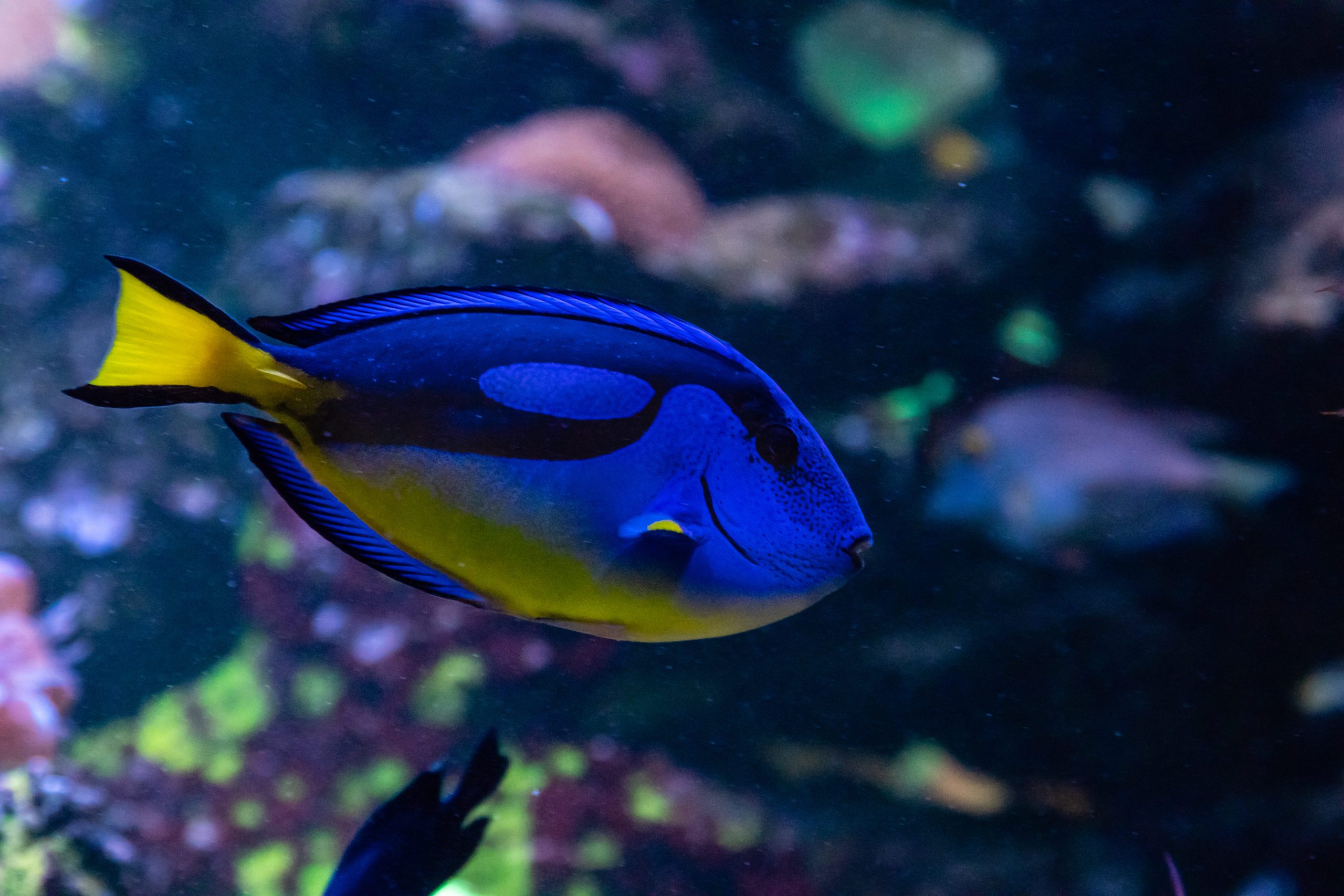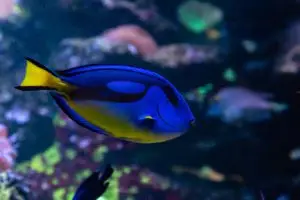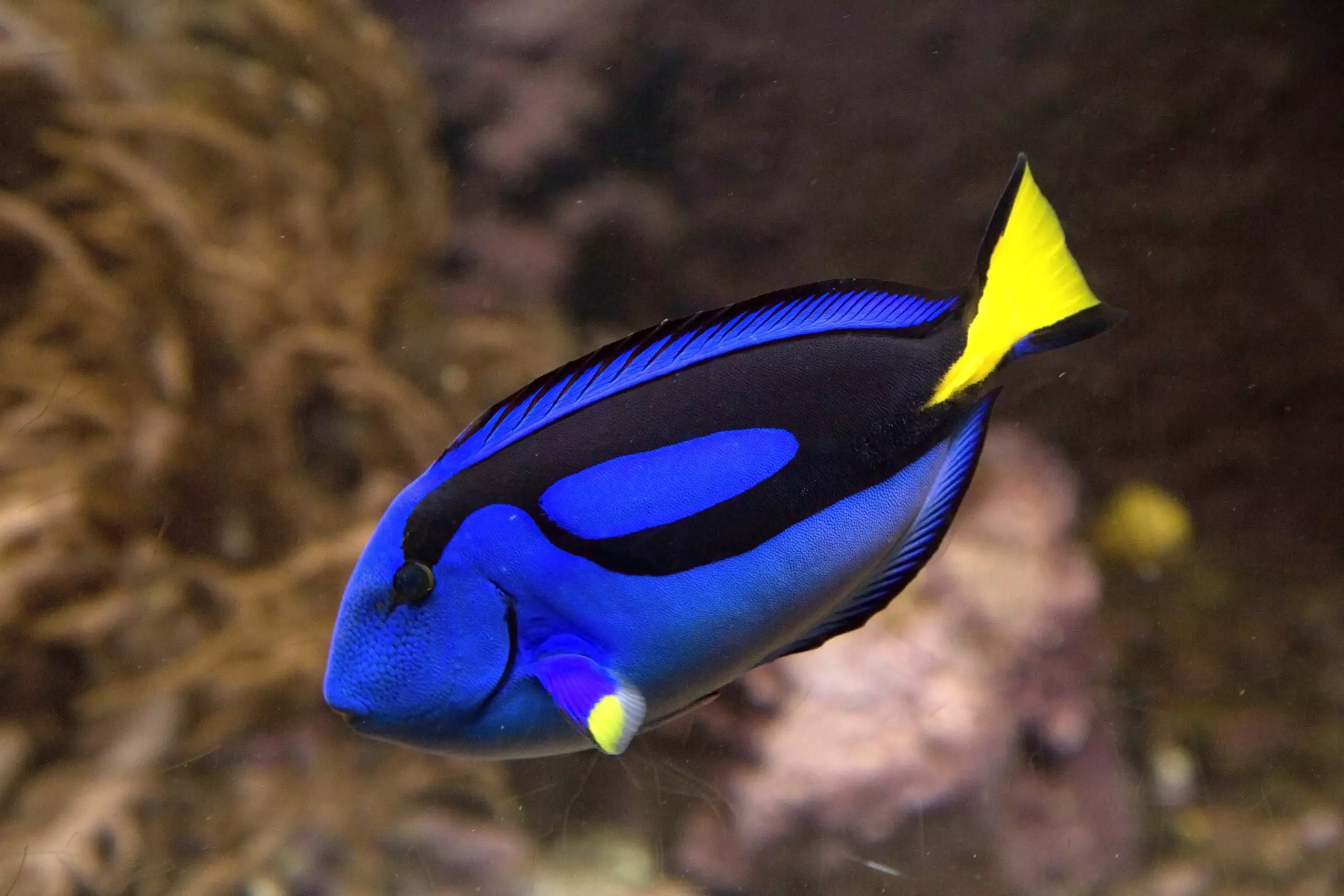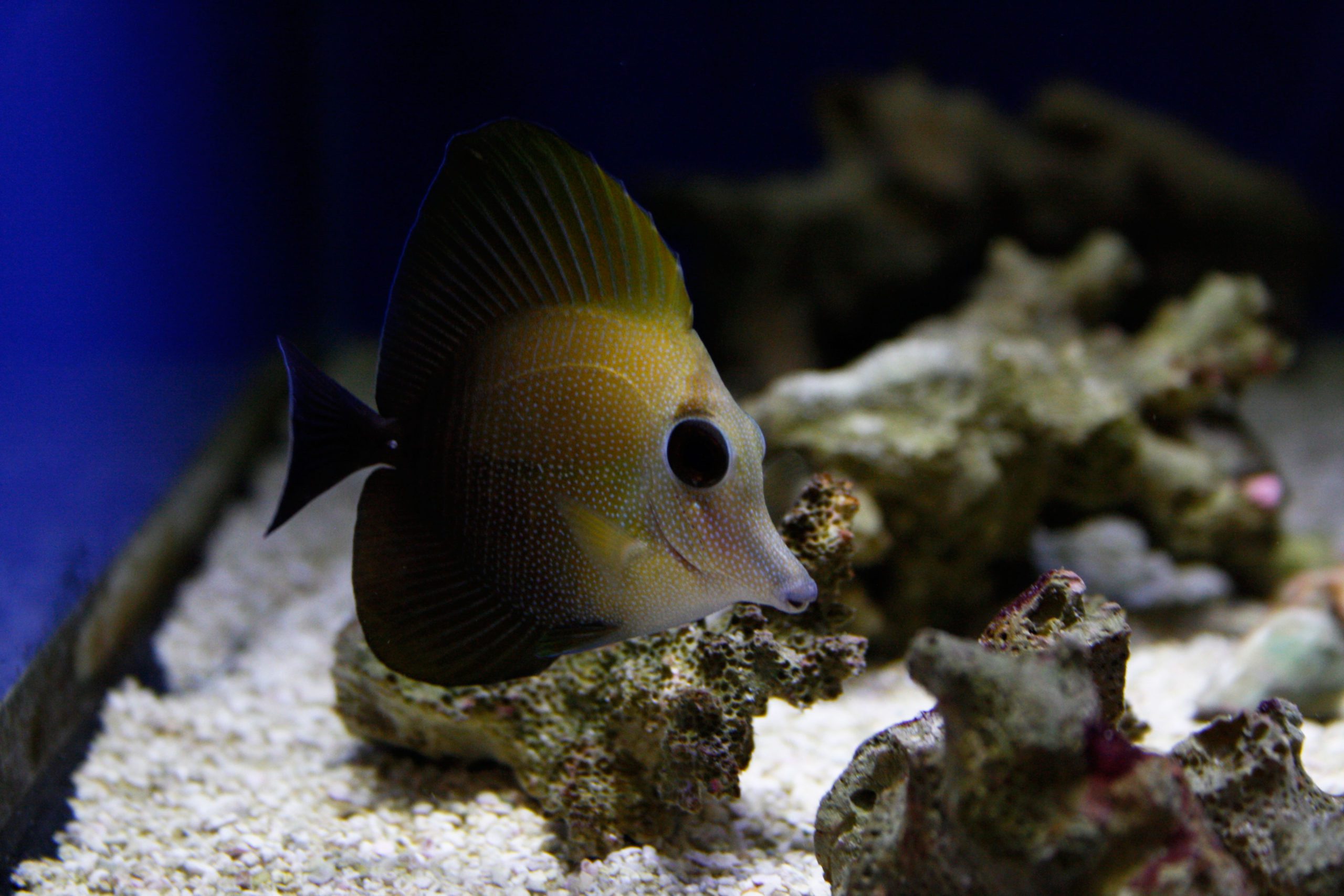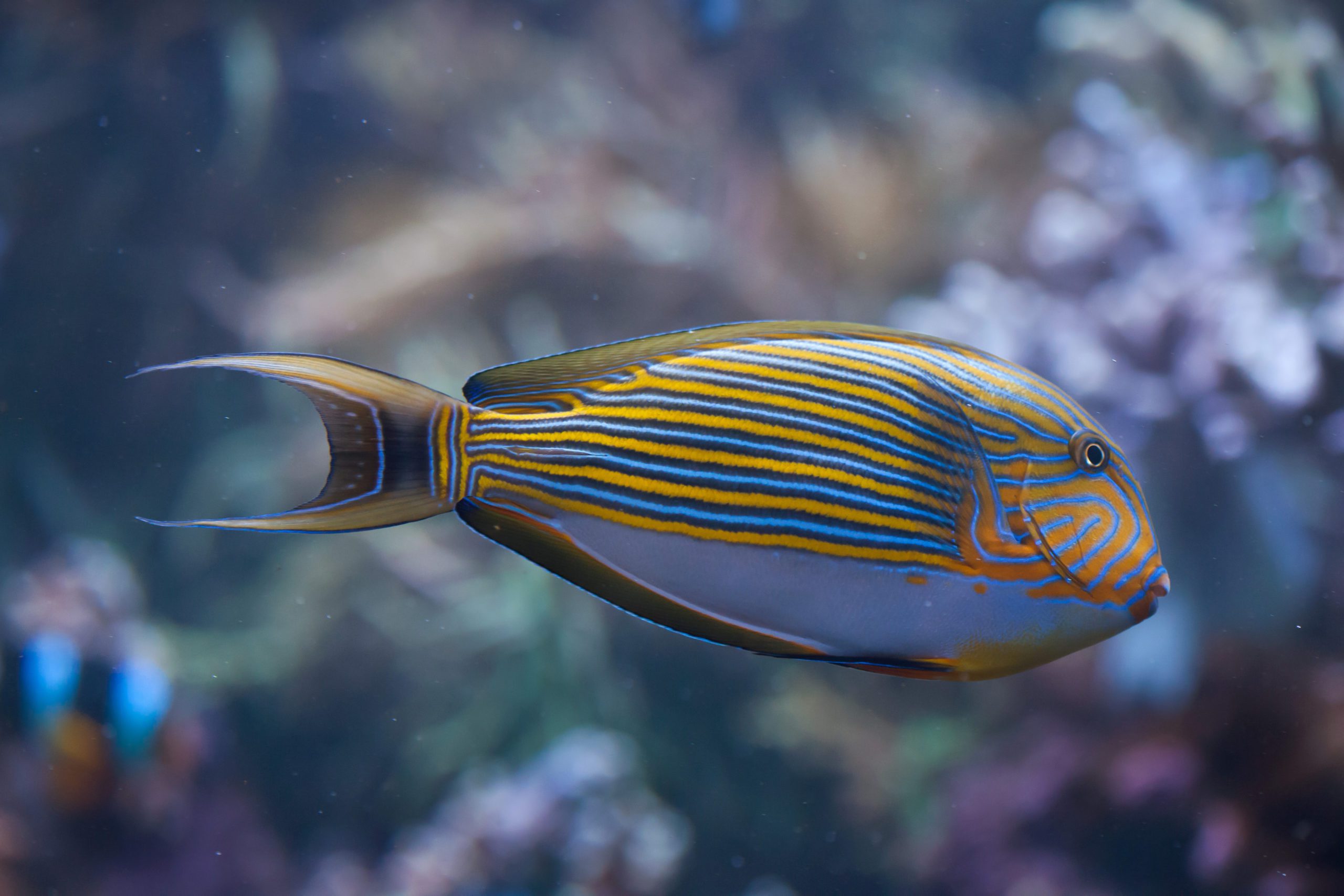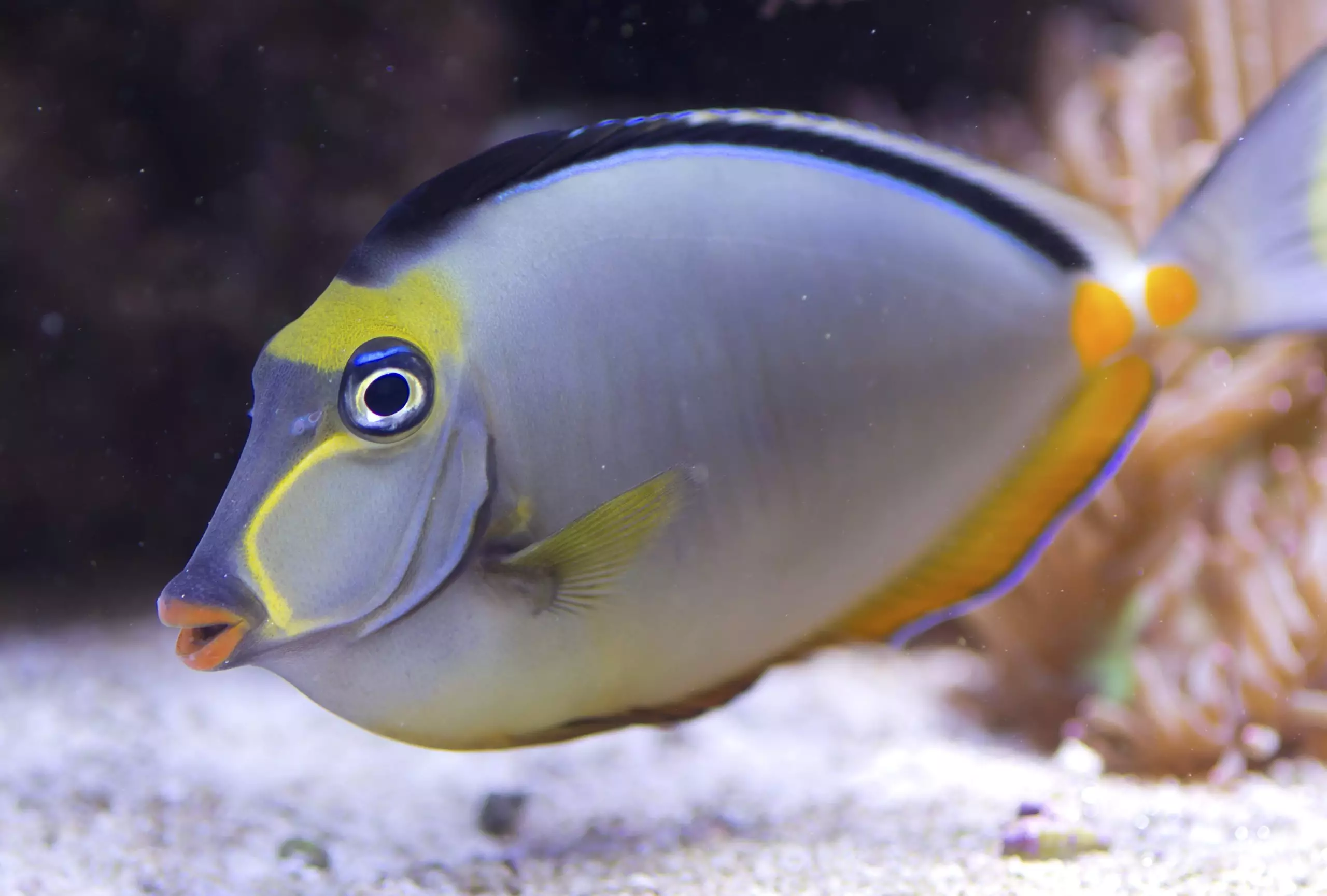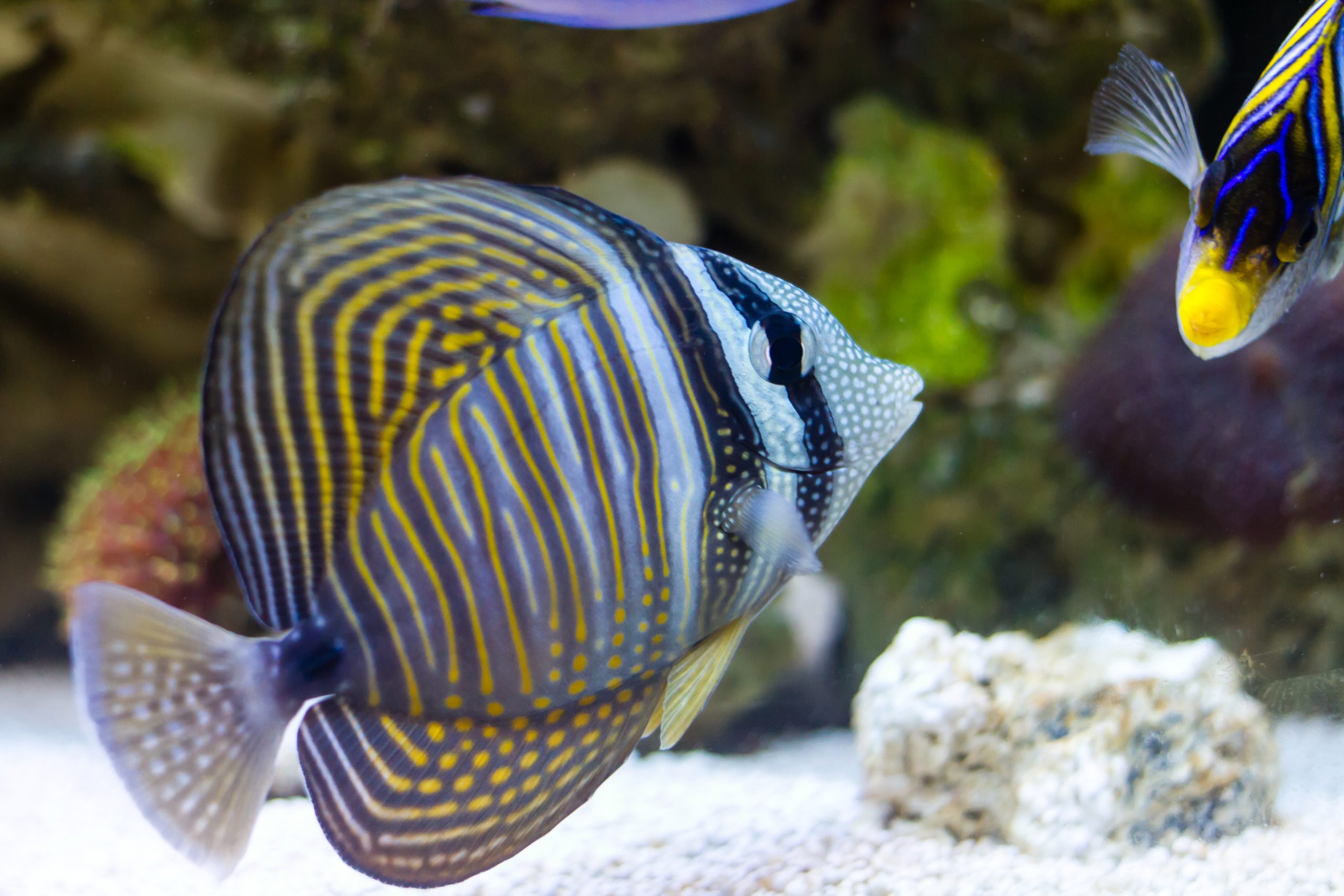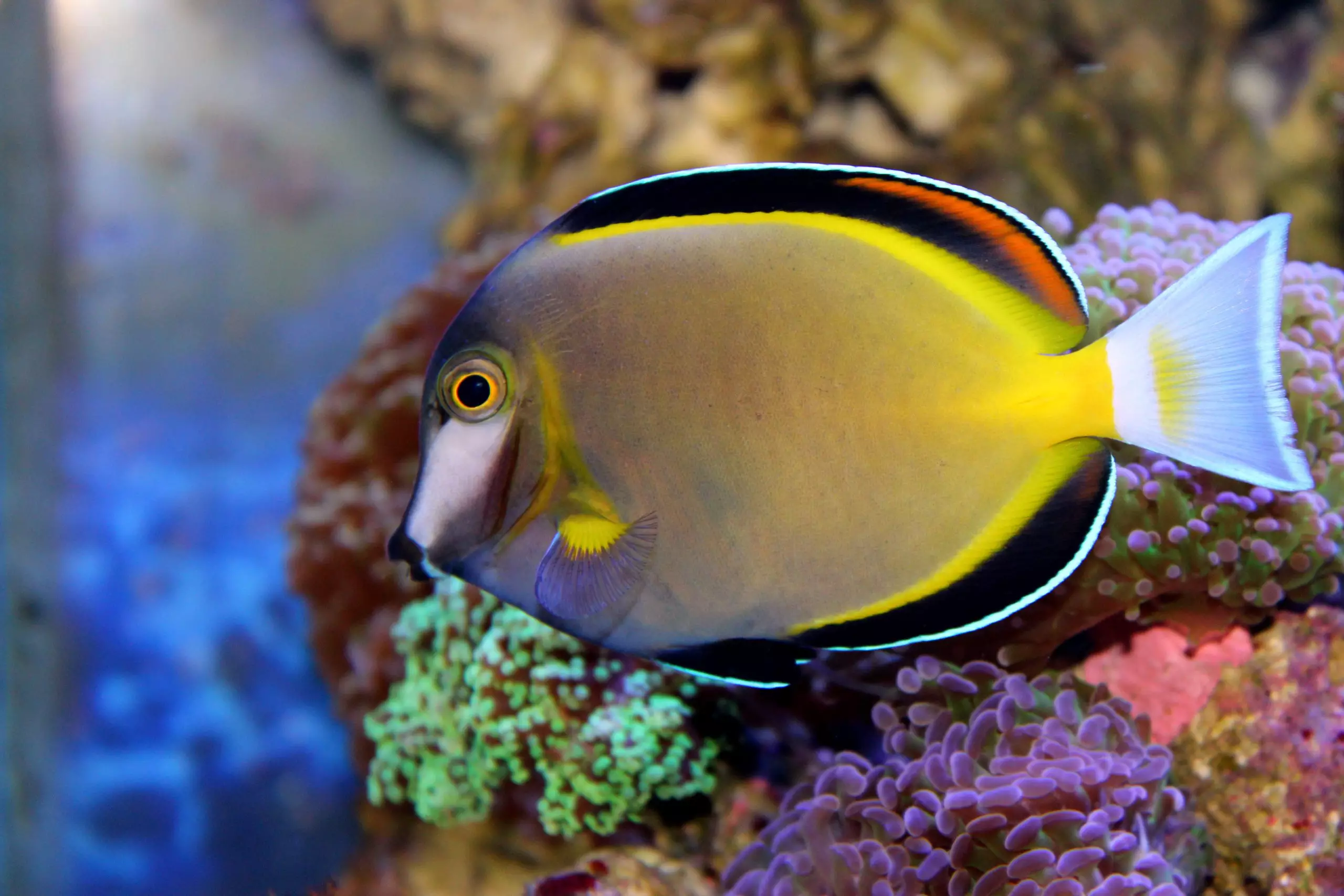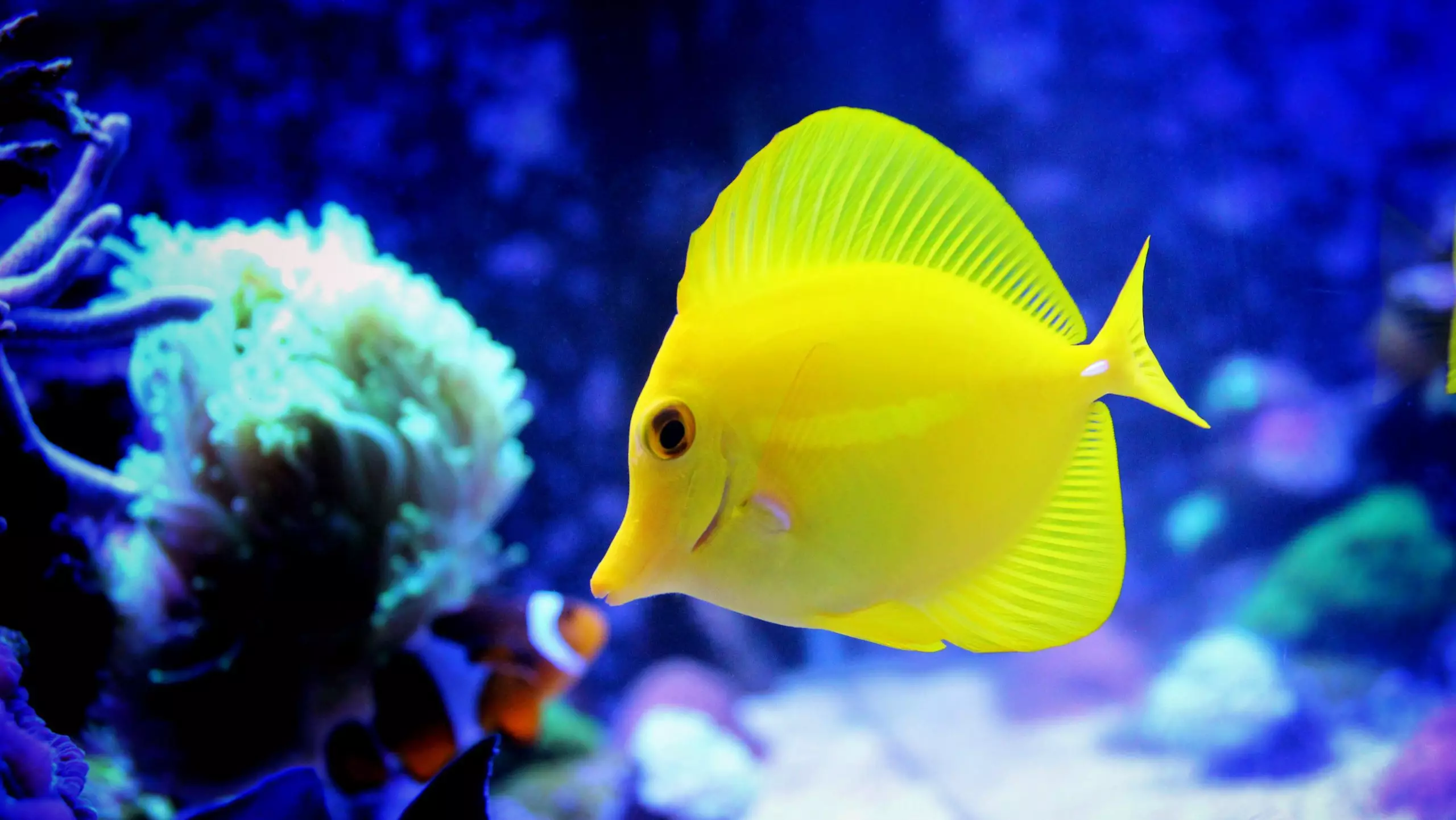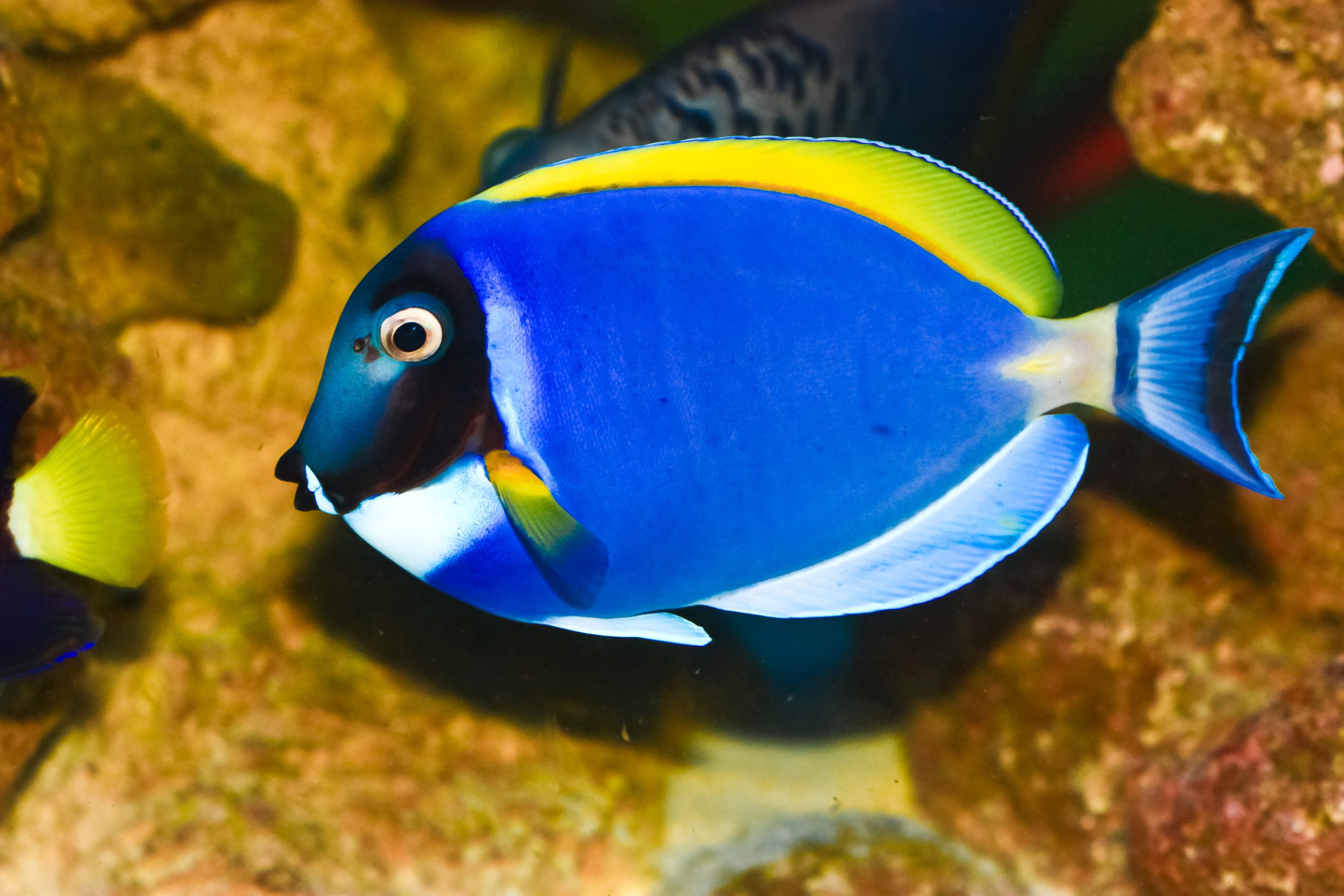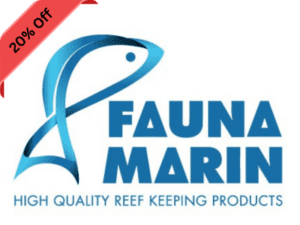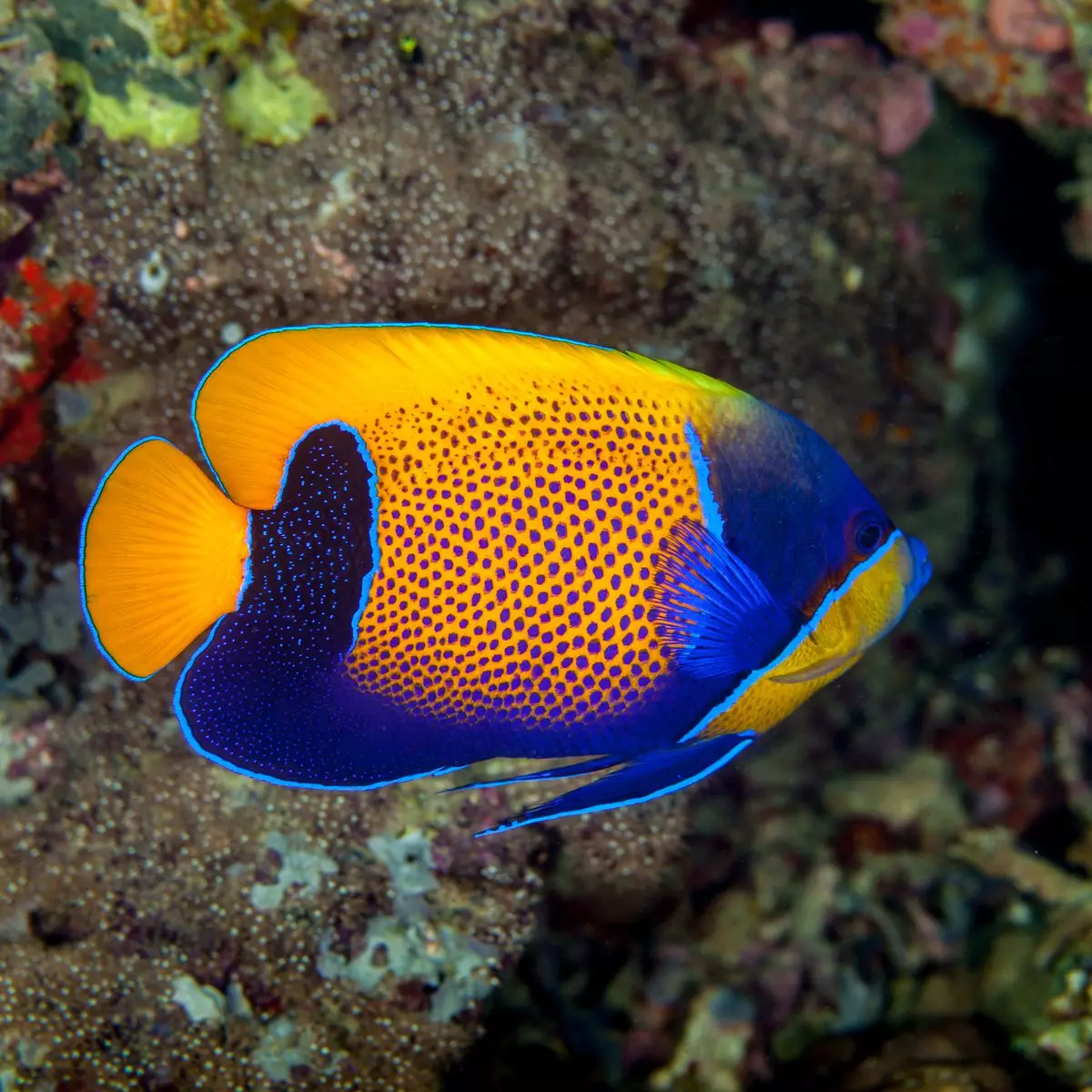Yellow Belly Regal Blue Tang
$99.99
Select Variant
Are you new to the hobby? Blue Tangs should only be taken care of in aquariums that are that are at least 6 feet in length and supervised by knowledgeable aquarium owners who are marine (saltwater) aquarists. If you're new to aquarists and want to try a similar fish, such as Blue Tangs. Marine (Saltwater) Yellowtail Damselfish , or Freshwater Boesemani Rainbow.
It is a stunning shade of the well-known Blue Tang. While it shares beautiful colors similar to the Blue Tang, the Yellow Belly Regal Blue Tang boasts an edgier, deeper blue hue and a stunning yellow hue that covers a larger portion of the body. The yellow hue, which is most noticeable on the caudal Fin (tail) extends across the belly, providing a Yellow Belly Regal Blue Tang an appealing improvement in hue. They do not display the belly coloration of yellow until they are mature. Together with the distinctive black markings that resemble a painter's palette and the Yellow Belly Regal Blue Tang is certain to be a striking aquarium for fish only or reef aquariums.
The native reef fish of the Indian Ocean, the Yellow Belly Regal Blue Tang likes excellent hiding spots amid live rocks. However, this fish is also fond of swimming. Thus, enough space for your fish to explore the aquarium is vital to ensure optimal health. While it may be peaceful around its tankmates, however, it can display aggression towards other fish in its species. To ensure that you have many specimens, bring all of them simultaneously into the larger marine system.
While Tangs consume meaty food alongside others in aquariums, it's crucial that they get ample amounts of marine-based algae or seaweed. This will strengthen the Blue and Yellow Hippo Tang's immunity, decrease aggression, and improve overall health. Dry seaweed can be attached to a rock or a vegetable clip. Feed them at least three times a week. Sea Veggies, Seaweed Salad, and Ocean Nutrition are all ideal products that are simple to make use of.
A careful observation of your Yellow Belly Regal Blue Tang is crucial since it is more vulnerable to lateral line diseases, the ich, fin erosion, and various skin parasites than a lot of other fish.
Approximate Size of Purchase: Tiny: 3/4" to 1-1/4" Small: 1-1/4" to 2"; Small/Medium: 2" to 2-1/2" Medium: 2-1/2" to 3-1/2"; Medium/Large: 3-1/2" to 4-1/4" Large: 4-1/4" to 5-1/4"
- Description
- Additional Information
- Reviews
Information about Yellow Belly Regal Blue Tang
The Yellow Belly Blue Tang is simply a color variation from the Pacific Blue Tang. The only distinction is that it comes with an orange belly region and is sourced in the Indian Ocean. It is frequently purchased due to its vibrant color, but it is not a fish that is suitable for novices. In its juvenile stage, it will go swimming in groups and hide behind coral branches to keep safe. They will start to fight with each other when they get to approximately 4". The juveniles are able to adapt most well to life in captivity.
Yellow Belly Regal Blue Tang Diet
A lot of people buy this fish on the assumption that, like other Tang cousins, it'll consume algae that are causing problems inside the fish tank. In some instances, an adult will consume algae in addition to its regular diet, but its primary diet is made up of plankton as well as meaty food. Mysis shrimp frozen minced fresh shrimp and flake pellets and frozen dishes. They can also enjoy eating frozen herbivore food preparations.
size
Large, Medium, Small
Weight
6 lbs
Dimensions
1 × 1 × 1 in

